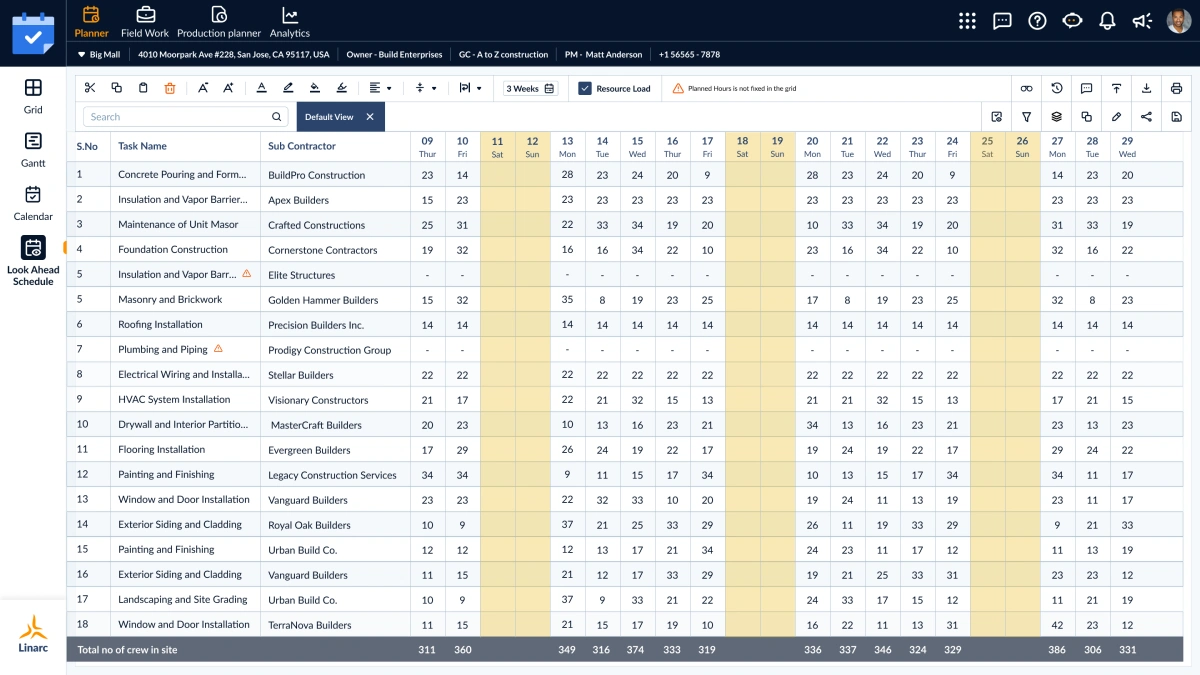
Mobilization is often one of the most overlooked drivers of construction project costs. From transporting heavy equipment to setting up field offices, early-stage logistics can quietly and quickly drain your budget before any actual construction begins.
But, there’s good news: with smart planning and modern mobile tools, construction firms can significantly reduce mobilization expenses without compromising on safety or quality.
What Are Mobilization Costs, and Why Do They Matter?
Mobilization costs include all the resources required to get a project up and running correctly. Here are some common project mobilization costs general contractors incur:
- Equipment relocation
- Material transportation
- Site prep and staging
- EPA and environmental testing
- Temporary facilities setup - jobsite trailer, water, electricity, internet
- Portable bathroom trailers or portalets
- Labor deployment and relocation
These costs typically fall under “General Conditions” in the budget, but unmanaged, they can lead to delayed starts, unhappy clients, and budget overruns; three things no project manager or owner wants to hear.
5 Proven Ways to Cut Mobilization Costs
Here’s how to prevent and reduce mobilization costs without compromising the project timeline and site standards.
1. Digitize and centralize pre-construction planning with a dynamic, cloud-based construction management platforms like Linarc, which allow teams to:
- Pre-coordinate delivery schedules, routes, and staging areas; minimizing idle/wasted equipment and labor
- Avoid redundancies and miscommunication
- Streamline early-stage planning
The result: less downtime, optimized crew and equipment schedules, and reduced unforeseen site prep and staging costs, which help protect profit margins.
2. Optimize Delivery and Staging Through Smart Scheduling
Disorganized deliveries will quickly lead to your project going over budget. Linarc, a tool that maps out materials, tracks deliveries, arrival windows, and resource scheduling, not only helps prevent idle equipment and labor but also gives field and office teams a clear, real-time view.

3. Leverage Prefab and Modular Construction
Modular and prefabricated components reduce the need for full crews and heavy equipment during mobilization. Moving work offsite means less equipment and fewer workers needed during mobilization.
- Reduces site prep & staging time
- Minimizes traffic congestion and environmental disruptions & requirements
- Less equipment and workers needed during mobilization
- Expedited and seamless project kick-off
Planning these workflows inside an integrated platform like Linarc lets you align off-site production with on-site needs, avoiding costly mismatches in timing, scope, or communication.
4. Geo-targeted Labor Resourcing
Hire locally when possible to cut travel, lodging, and per diem costs. By sourcing skilled local labor, you reduce overhead and show community support, strengthening local relations.
5. Standardize Project Mobilization Checklists
Create consistent, repeatable mobilization plans to reduce errors and ensure faster project kick-offs. Digitize your checklists, punch lists, and more in one centralized mobile platform. Teams using Linarc can build digital templates, monitor progress, and assign/update tasks in real time.

Mobilize Smarter, Start Projects Faster
Cutting mobilization costs doesn’t just save GCs a few dollars; it sets your projects and teams up for long-term success. Delays, idle resources, and disjointed logistics can impact budgets before work begins. With the right strategy and tools, you can cut mobilization costs while improving project readiness and timelines.
Linarc supports end-to-end project management through a flexible, easy-to-adopt platform; helping construction teams digitize planning, streamline coordination, and mobilize faster with fewer resources and costs.
Want to learn more about Linarc’s construction project management software, schedule a demo today.


.webp)
.webp)
.webp)

